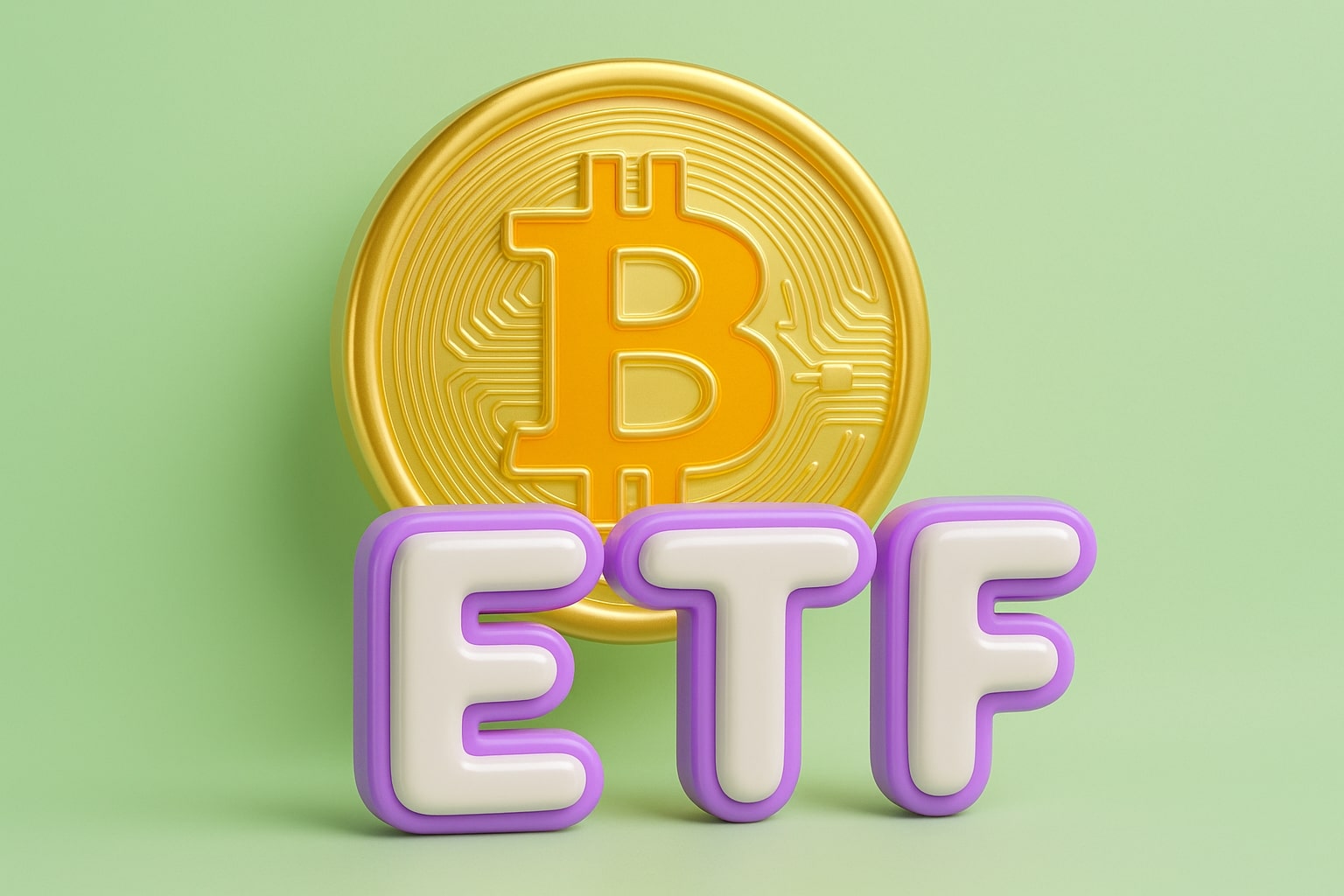
Bitcoin (BTC-USD) ETF Inflows Surge $240M as iShares IBIT (NASDAQ:IBIT) Climbs to $51.55
After six days of outflows, Bitcoin ETFs post a $240M inflow led by IBIT and FBTC. BTC-USD stabilizes near $91,130 | That's TradingNEWS
Institutional Capital Returns as Bitcoin (BTC-USD) ETF Inflows Reverse Six-Day Outflow Streak
Bitcoin (BTC-USD) trades near $91,130, recovering from a six-day outflow streak that saw over $3.5 billion withdrawn from U.S. Bitcoin ETFs. Fresh data show institutional capital rotating back into the market — a shift that could redefine the short-term structure of the crypto cycle.
On November 28, Bitcoin ETFs absorbed $240 million in net inflows, led by iShares Bitcoin Trust (NASDAQ: IBIT) and Fidelity Wise Origin Bitcoin Fund (FBTC). IBIT gained +1.02% to $51.55, with an after-hours rise to $51.75, while total trading volume exceeded 71 million shares. This renewed accumulation marks a technical and psychological inflection following two weeks of systematic redemptions across crypto funds.
Fed Policy Shift Triggers Risk-On Rotation Into BTC Exposure
The Federal Reserve’s imminent policy pivot — with JPMorgan forecasting two 25-bps cuts in December and January — has reignited appetite for liquidity-sensitive assets. After the Producer Price Index stabilized at a 2.6% core gain, the market reassessed recession risk, fueling renewed interest in Bitcoin as a macro-leveraged inflation hedge.
With U.S. jobless claims at 216 000, the lowest since April, institutions see room for sustained policy easing, improving Bitcoin’s appeal relative to Treasuries. The CME FedWatch Tool now assigns 85% odds to a December cut, and Bitcoin ETFs have responded with immediate inflows — signaling direct alignment between monetary easing expectations and digital-asset allocations.
ETF Flow Dynamics Highlight Institutional Strategy Reset
Data from multiple trackers show $21.12 million in net inflows to Bitcoin ETFs on November 28, versus $60.82 million into Ethereum and $21.81 million into XRP products. Despite smaller inflow size, the Bitcoin segment’s reversal from outflows signals stabilization of long-term mandates.
Over $273 million in short liquidations during the same 24-hour window amplified the upside, led by $86 million in BTC shorts, revealing a mechanical unwind of bearish positioning. Institutional investors — particularly U.S. registered investment advisors (RIAs) and hedge funds with 1–2-year mandates — appear to be restoring exposure after adjusting quarterly risk books earlier in November.
The Emerging Two-Year ETF Cycle and Fund Manager Economics
Bitcoin’s historical four-year halving cycle is being displaced by a two-year institutional flow cycle, defined by fund-manager performance targets and cost-basis pressures. Data from Foresight News estimate that the average ETF cost basis is roughly $84 000, implying that any sustained drop below this level risks forcing profit-taking.
Managers who entered positions in late 2024 at $70 000–$96 000 now face year-end performance compression, and those who allocated in mid-2025 at ~$107 000 must reach $140 000 by mid-2026 to meet a 30 % CAGR target. This calendar-driven pressure creates mechanical selling zones when Bitcoin consolidates too long, transforming time into a structural headwind.
If BTC fails to appreciate beyond $91 000–$95 000 in Q4, ETF AUM could fall back toward $103.5 billion, resetting the institutional cost structure. The implication: future Bitcoin volatility will be driven less by miner halvings and more by ETF redemption windows tied to fund-performance thresholds.
IBIT ETF Dominance Reinforces Market Maturity
iShares Bitcoin Trust (IBIT) remains the anchor of institutional exposure with a market capitalization of $162.49 billion. Its year-range of $42.98–$71.82 highlights deep liquidity resilience, even amid prolonged corrections. Over 71 million shares change hands daily, cementing IBIT’s role as Bitcoin’s primary liquidity proxy on regulated exchanges.
The fund’s cumulative inflows since launch now exceed $14 billion, offsetting large-cap crypto outflows elsewhere. While Grayscale’s GBTC continues to shed capital due to fee arbitrage, IBIT’s 0.25% expense ratio and transparent NAV tracking have made it the preferred institutional instrument for treasury exposure.
Macro Tailwinds Meet Flow-Driven Structural Repricing
The broader crypto market capitalization rebounded to $3.08 trillion, up 3% in 24 hours, with Bitcoin reclaiming 56.5% market dominance. Liquidity conditions remain thin but improving, as aggregate open interest across derivatives contracts fell from $45 billion to $28 billion, a 37 % leverage reduction. This “leverage cleanse” creates headroom for sustainable trend development.
Technical indicators on BTC’s 4-hour chart show renewed strength: the 50 EMA at $88 000 now acts as rising support, while $90 000–$92 000 forms the resistance cluster that must be cleared for structural continuation. Above that zone, on-chain cost-basis data identify $100 000 as the next liquidity magnet.
Read More
-
VOO ETF (NYSEARCA:VOO) Climbs to $496.27 as $38B Fund Inflows and 8.4% Earnings Growth Propel S&P 500 Toward 7,064 Target
28.11.2025 · TradingNEWS ArchiveStocks
-
XRPI and XRPR ETFs Ignite $643.9M Inflows as XRP Supply Shrinks and Price Targets Shift Toward $3.80
28.11.2025 · TradingNEWS ArchiveCrypto
-
Natural Gas Price (NG=F) Rallies 6.4% to $4.85 on Cold U.S. Weather — Eyes on $5.25 Resistance
28.11.2025 · TradingNEWS ArchiveCommodities
-
USD/JPY Price Forecast - (FX:USDJPY) Stabilizes Near 156.20 as Tokyo CPI at 2.7% Fuels BoJ Hawkish Shift
28.11.2025 · TradingNEWS ArchiveForex
Institutional Risk Management and Flow Reflexivity
Asset-management research shows nearly one-third of hedge-fund returns are mechanically flow-driven rather than skill-based. This means inflows themselves create the momentum that sustains Bitcoin rallies — and their reversal can rapidly compress returns below 30%, forcing synchronized de-risking.
Thus, the ETF complex has become both the accelerator and the circuit breaker of Bitcoin’s market structure. The daily Coinglass liquidation data and ETF inflow/outflow metrics now act as early indicators of cycle transitions, replacing halving supply curves as the dominant forecasting variable.
Comparative ETF Landscape and Rotation Patterns
Ethereum ETFs currently attract larger nominal inflows ($60.82 million) than Bitcoin, reflecting diversification into networks with active on-chain yields. Yet Bitcoin remains the core collateral layer: its 91 K USD price anchors the broader digital-asset risk curve.
Meanwhile, Solana ETFs saw $8.1 million outflows, and XRP ETFs added $21.81 million, showing risk rotation toward established assets. The divergence underscores Bitcoin’s role as a capital-preservation anchor in crypto portfolios during monetary uncertainty.
Geopolitical and Policy Catalysts Reinforcing Institutional Positioning
Thailand’s 0% capital-gains tax on crypto trades through licensed exchanges amplifies global ETF adoption momentum. Asian market participants — historically constrained by capital controls — now gain institutional channels to accumulate Bitcoin exposure via tax-advantaged jurisdictions.
Simultaneously, U.S. regulatory clarity following multiple spot-ETF approvals (IBIT, FBTC, ARKB) has removed one of the largest friction points for pension and endowment allocators. Bitcoin’s global accessibility, combined with its new regulatory structure, redefines it as an investable macro-asset rather than a speculative instrument.
Technical Outlook and Structural Implications
The Puell Multiple indicator sits at 0.67, nearing the 0.50 zone historically associated with market bottoms, suggesting miner selling pressure is easing. Bitcoin’s ETF-adjusted cost basis near $79 000 remains intact, implying institutional holders have not capitulated.
Key support sits at $88 000, followed by $74 000, while resistance extends from $91 000 to $92 000. Sustained closes above that band could invite algorithmic rotation from ETH and SOL products back into BTC-linked funds, pushing price toward $100 000–$107 000 in Q1 2026 if flows persist.
Verdict: BUY (BTC-USD) — Flow-Cycle Transition Favors Institutional Accumulation
Bitcoin’s ETF complex has become the gravitational center of the entire crypto market. With IBIT inflows reversing multi-day outflows, Fed liquidity expansion imminent, and the new two-year flow cycle aligning with institutional mandates, the balance of evidence favors accumulation.
BTC-USD remains a Buy above $88 000, targeting $100 000–$107 000 in the near term and potentially $125 000–$140 000 by mid-2026 if ETF momentum sustains. The market’s structural evolution from halving-based cycles to performance-driven institutional flows marks Bitcoin’s full transition into the macro-asset class era.

















